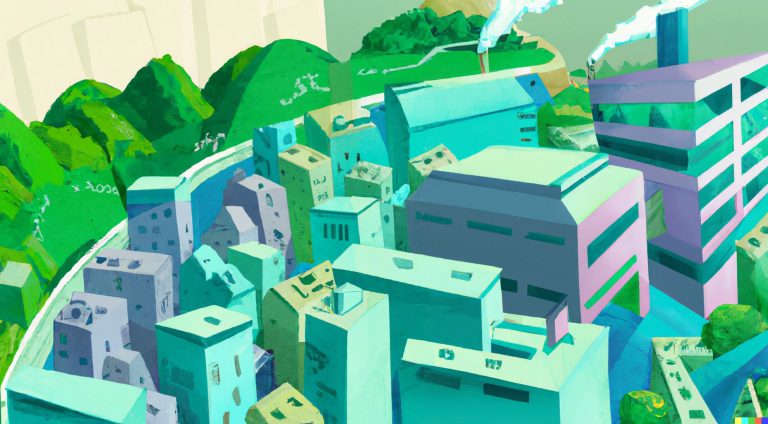The Circular Economy: Redesigning Business for Environmental Sustainability
Encouraged by growing environmental concern and dwindling natural resources, many businesses are beginning to regard sustainability in terms of the circular economy. A traditional linear economy follows take, make, dispose model. But the circular economy is one where growth and development are maximized, where the lifespan of resources is in turn extended to the maximum and waste and its environmental impact are minimized; where successful avenues exist for reusing products at every possible opportunity. The result of all this can be summed up as an economy that produces more than it consumes but requires less to do so.
Differentiation from Other Forms of Economic Activity
The circular economy is based on the idea that materials should be kept in use for as long as possible; it designs for recycling, reusing and composting products. To accomplish this, it tries to establish closed loop systems?products can be returned easily into production processes again after they are worn out.
The main ideas behind Circular Economy
Designing for long lifetimes: Products are designed to survive rough use and to be easily repaired by their owners. This means that they are not constantly being replaced by new items after only a short period of use, and therefore last longer. So less waste is created.
Resource efficiency: Reduced resource consumption, improved material flow. This means sustainable material sourcing and streamlined production methods.
Waste is valued: Waste products are potential resources. By converting or recycling them into other things that can be used for something else, a business relieves its environmental burden and in the process creates new value.
Business model transformation: Companies are encouraged to develop an entirely new way of doing things–for example the product ‘as a service’ approach where customers use and pay for a product over time rather than owning it. Such changes can create demand for more durable products that are less frequently replaced.
Benefits of Using the Circular Economy
Arguments like these have led government to make “zero waste” its goal in 2006, and through “reducing emissions, preserving resources,” it has been realized we can maintain a “leapfrog development.” Moreover this is horrifying: at the moment our landfills and oceans don’t just grow but become more grimy all the time with priducts thrown away after they have been used once.Via supply chain: By using these corporate materials, companies can then market to you products. Today, for instance, a cardboard wine bottle made from recycled paper is sold in supermarkets. Then with the bottle’s last use being paper again, it’s as if you’re recycling life a second time.
Polyethylene is loved by recyclers and environmentalists: Polyethylene from plastic bottles and other products, treated as and falling under bulk rubbish bags to be burned up or buried in future centuries, can now have another chance to live. Furthermore, healthier and cheaper; environmentally friendly too!Products are made from recyclable polyethylene: A world first!As recycled material is cheaper to make than new or raw materials, using them is aiding nature. 20% of this year’s Chinese jeans are made from old cotton; and with canny recyclers wanting an increase in the percentage — well there’s 80 billion or so pairs waiting just there for us to start working on it now.”This is something so valuable,” said a Chiruyun Clothes Factory employee who didn’t want to be named.
Based on a survey of the 30 enterprises publishing Corporate Environmental Reports from 1998 to 2000 — with a billion-Yuan turnover each and employing an average 2,000 people: When they use raw materials that are recycled, 20% of the natural resources, money and energy which companies use for production is saved. For example, according to Li Yang, one of Wang Jingfu’s assistant researchers (who has been doing an in-depth study on this subject), in cases where a tonne of disased cotton jersey is reprocessed by itself there can be up to 5 tonnes of water and 5 tonnes dyed fabric saved.
New Era: In the circular economy, what is unusable now may later be useful. The Group was the first business in Taiwan to incorporate the circular economy into its thinking. Sun Tsung-ho had no interest in waste. To him, treating waste would affect environmental quality. That is why he resigned from his steady job and eventually established ASE Group of Taiwan. But for all of the carbon dioxide problems (red light operational issues) hard sun Tsung-ho had summoned to life a machine in which did daily work on the soil with proceeds from Land Reform; above thiccly, Those experiments at Chen Mei will be remembered thusly.!£|^
Creating Anew: In a circular economy, firms that embrace the zero waste principle and practice it create new opportunities for themselves and their workers.”An industrial ecology in which one person’s waste is another’s commodity is apropo. That old newspaper is reusable after months or years on somebody’s coffee table only: we had better shake these possibilities more smartly!” exclaimed Hao Bangtyu (Director of the Jidoui Working Group)..”When people think back upon their land and see change, how it has never changed like this before in its whole history,” continued Han Jewei.
In conclusion, the circular economy is about changing the way that businesses think about environmental sustainability. Following this model demonstrates a company’s capacity for environmental sustainability and can even develop new business. In the new era of business, circular economics practices will blend more and more with resilient resource-carrying capacity, environmental consciousness around natural resources direct nature protection lifestyle arrangements Document based on draft document: Shanghai Research Group for Green Development Promotion (February 2021) Management Yearbook of China ‘s Large Enterprises ‘Circular Economy and Green Development (Vlll) The above is employed with Dr Zhang Miao’s permission.






